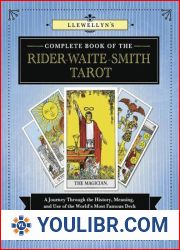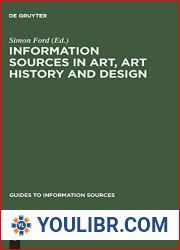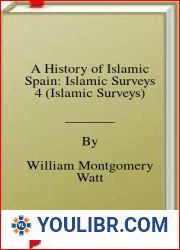
BOOKS - Istanbul: A History

Istanbul: A History
Author: David Jacobs
Year: December 10, 2015
Format: PDF
File size: PDF 1.5 MB

Year: December 10, 2015
Format: PDF
File size: PDF 1.5 MB

Istanbul: A History Inlet of Golden Opportunities For centuries, the inlet called the Golden Horn and the city overlooking it have been situated in the middle of the known world. To the south lay the Mediterranean, where the Greek, Roman, Persian, and Arab worlds revolved, while to the north lay the Black Sea with its Russian and eastern European coastline. The city on the Golden Horn, Istanbul, has been coveted by a succession of different peoples, but despite frequent sieges, changes in control, and even destruction, it has proven virtually immortal. Ancient Beginnings Founded nearly twenty-seven centuries ago as the Greek colony of Byzantium, the city was harassed by barbaric Thracians, attacked by the Persians, vied for by the Athenians and Spartans, and weakened and dispirited its citizens. Seeking protection, they finally fell under Roman rule, becoming little more than a Roman outpost. The Rise of Constantinople In the fourth century, the Roman Emperor Constantine I decided to build his capital on the site, marrying ancient Greco-Roman culture with Eastern Orthodox Christianity and making it the center of the vast Byzantine Empire.
Istanbul: A History Inlet of Golden Opportunities На протяжении веков вход под названием Золотой Рог и город с видом на него находились в центре известного мира. К югу лежало Средиземное море, где вращались греческий, римский, персидский и арабский миры, а к северу лежало Черное море с его российским и восточноевропейским побережьем. Город на Золотом Роге, Стамбул, жаждала череда разных народов, но, несмотря на частые осады, смену контроля и даже разрушения, он оказался фактически бессмертным. Древние начала Основанный почти двадцать семь веков назад как греческая колония Византия, город подвергался преследованиям со стороны варварских фракийцев, нападениям персов, соперничеству афинян и спартанцев, а также ослаблял и раздражал своих граждан. Ища защиты, они окончательно попали под римское владычество, став немногим более чем римским форпостом. Восстание Константинополя В четвертом веке римский император Константин I решил построить свою столицу на этом месте, сочетая древнюю греко-римскую культуру с восточным православным христианством и делая ее центром обширной Византийской империи.
Istanbul : A History Inlet of Golden Opportunities Pendant des siècles, l'entrée appelée la Corne d'Or et la ville qui la surplombe ont été au centre du monde connu. Au sud se trouvait la mer Méditerranée, où tournaient les mondes grec, romain, persan et arabe, et au nord se trouvait la mer Noire avec ses côtes russe et orientale. La ville de la Corne d'Or, Istanbul, désirait une série de peuples différents, mais malgré les sièges fréquents, le changement de contrôle et même la destruction, elle s'est avérée immortelle. s débuts anciens Fondée il y a près de vingt-sept siècles en tant que colonie grecque de Byzance, la ville a été persécutée par les Thraces barbares, les attaques des Perses, la rivalité des Athéniens et des Spartiates, et a affaibli et énervé ses citoyens. En cherchant une protection, ils sont finalement tombés sous la domination romaine, devenant un peu plus qu'un avant-poste romain. L'insurrection de Constantinople Au quatrième siècle, l'empereur romain Constantin I a décidé de construire sa capitale sur ce site, combinant l'ancienne culture gréco-romaine avec le christianisme orthodoxe oriental et en faisant le centre du vaste empire byzantin.
Istanbul: A History Inlet of Golden Opportunities Durante siglos, la entrada llamada el Cuerno de Oro y la ciudad con vistas a ella han estado en el centro del mundo conocido. Al sur se encontraba el mar Mediterráneo, donde giraban los mundos griego, romano, persa y árabe, y al norte se encontraba el mar Negro con su costa rusa y oriental europea. La ciudad en el Cuerno de Oro, Estambul, anhelaba una serie de pueblos diferentes, pero a pesar de los frecuentes asedios, cambios de control e incluso destrucción, resultó ser prácticamente inmortal. Inicios antiguos Fundada hace casi veintisiete siglos como colonia griega de Bizancio, la ciudad fue perseguida por los tracios bárbaros, los ataques de los persas, la rivalidad de atenienses y espartanos, y debilitó e irritó a sus ciudadanos. Buscando protección, finalmente cayeron bajo el dominio romano, convirtiéndose en poco más que un puesto avanzado romano. La rebelión de Constantinopla En el siglo IV, el emperador romano Constantino I decidió construir su capital en este lugar, combinando la antigua cultura grecorromana con el cristianismo ortodoxo oriental y convirtiéndola en el centro del vasto Imperio bizantino.
A History Inlet of Golden Explorities Durante séculos, a entrada chamada Córrego de Ouro e a cidade com vista para ela estiveram no centro de um mundo famoso. Ao sul, havia o Mediterrâneo, onde giravam os mundos grego, romano, persa e árabe, e ao norte estava o Mar Negro, com sua costa russa e da Oriental. A cidade do Corno de Ouro, Istambul, vivia de uma sucessão de povos diferentes, mas apesar dos frequentes assentamentos, mudanças de controle e até destruição, ela se revelou imortal. Fundada há quase sete séculos como a colônia grega de Bizântia, a cidade foi perseguida por facões bárbaros, atacada por persas, rivalidade entre atenienses e espartanos, e enfraqueceu e irritou seus cidadãos. Em busca de proteção, eles acabaram finalmente sob o domínio romano, tornando-se pouco mais do que um posto avançado romano. No século 4, o imperador romano Constantino I decidiu construir sua capital no local, combinando a antiga cultura greco-romana com o cristianismo ortodoxo oriental e tornando-a o centro do vasto império bizantino.
Istanbul: A History Inlet of Golden Opportunities Per secoli, l'ingresso del Corno d'Oro e la città con vista su di essa sono stati al centro di un mondo famoso. A sud si trovava il Mediterraneo, dove giravano i mondi greco, romano, persiano e arabo, mentre a nord si trovava il Mar Nero con la sua costa russa ed europea orientale. La città del Corno d'Oro, Istanbul, era assetata di diversi popoli, ma nonostante i frequenti assedi, i cambi di controllo e persino la distruzione, si rivelò di fatto immortale. Antico inizio Fondato quasi ventisei secoli fa come colonia greca di Bizantia, la città fu perseguitata dai Traci Barbari, attaccata dai persiani, dalla rivalità degli atenei e degli spartani, e indebolì e irritò i suoi cittadini. In cerca di protezione, sono finiti sotto il dominio romano, diventando poco più di un avamposto romano. La rivolta di Costantinopoli Nel quarto secolo l'imperatore romano Constantino I decise di costruire la sua capitale su questo luogo, combinando l'antica cultura greco-romana con il cristianesimo ortodosso orientale e rendendola il centro del vasto impero bizantino.
Istanbul: Eine Geschichte Inlet of Golden Opportunities Jahrhundertelang standen das Goldene Horn und die Stadt mit Blick darauf im Zentrum einer bekannten Welt. Im Süden lag das Mittelmeer, wo sich die griechische, römische, persische und arabische Welt drehte, und im Norden lag das Schwarze Meer mit seiner russischen und osteuropäischen Küste. Die Stadt am Goldenen Horn, Istanbul, sehnte sich nach einer Reihe verschiedener Völker, aber trotz häufiger Belagerungen, wechselnder Kontrolle und sogar Zerstörung erwies sie sich als praktisch unsterblich. Ancient Beginns Gegründet vor fast siebenundzwanzig Jahrhunderten als griechische Kolonie Byzanz, wurde die Stadt von barbarischen Thrakern verfolgt, von Persern angegriffen, von Athenern und Spartanern rivalisiert und geschwächt und verärgert seine Bürger. Auf der Suche nach Schutz fielen sie schließlich unter römische Herrschaft und wurden kaum mehr als ein römischer Außenposten. Der Aufstand von Konstantinopel Im vierten Jahrhundert beschloss der römische Kaiser Konstantin I., seine Hauptstadt an dieser Stelle zu errichten, indem er die alte griechisch-römische Kultur mit dem orientalisch-orthodoxen Christentum verband und sie zum Zentrum des riesigen byzantinischen Reiches machte.
''
Istanbul: A History Inlet of Golden Opportunities Yüzyıllar boyunca, Haliç adı verilen giriş ve ona bakan şehir ünlü dünyanın merkezinde olmuştur. Güneyde Yunan, Roma, Fars ve Arap dünyalarının döndüğü Akdeniz, kuzeyde ise Rusya ve Doğu Avrupa kıyılarıyla Karadeniz bulunuyordu. Haliç'teki şehir, İstanbul, bir dizi farklı halk için özlem duyuyordu, ancak sık sık kuşatmalara, kontrol değişikliklerine ve hatta yıkıma rağmen, neredeyse ölümsüz olduğu ortaya çıktı. Yaklaşık yirmi yedi yüzyıl önce Bizans'ın Yunan kolonisi olarak kurulan şehir, barbar Trakyalılar tarafından taciz edildi, Persler tarafından saldırıya uğradı, Atinalılar ve Spartalılar arasındaki rekabet ve vatandaşlarını zayıflattı ve rahatsız etti. Koruma arayışında, sonunda Roma egemenliği altına girdiler, bir Roma karakolundan biraz daha fazlası oldular. Konstantinopolis İsyanı Dördüncü yüzyılda, Roma İmparatoru I. Konstantin, antik Greko-Romen kültürünü Doğu Ortodoks Hristiyanlığıyla birleştirerek ve onu geniş Bizans İmparatorluğu'nun merkezi haline getirerek başkentini inşa etmeye karar verdi.
اسطنبول: مدخل تاريخي للفرص الذهبية لقرون، كان المدخل المسمى القرن الذهبي والمدينة المطلة عليه في قلب العالم الشهير. إلى الجنوب يقع البحر الأبيض المتوسط، حيث تدور العوالم اليونانية والرومانية والفارسية والعربية، وإلى الشمال يقع البحر الأسود بسواحله الروسية وأوروبا الشرقية. كانت المدينة الواقعة في القرن الذهبي، اسطنبول، تتوق إلى سلسلة من الشعوب المختلفة، ولكن على الرغم من الحصار المتكرر وتغييرات السيطرة وحتى الدمار، اتضح أنها خالدة تقريبًا. تأسست المدينة منذ ما يقرب من سبعة وعشرين قرنًا كمستعمرة يونانية لبيزنطة، وتعرضت للمضايقات من قبل التراقيين البربر، وهاجمها الفرس، والتنافس بين الأثينيين والإسبرطيين، وأضعفت وأزعجت مواطنيها. طلبًا للحماية، وقعوا أخيرًا تحت الحكم الروماني، وأصبحوا أكثر بقليل من موقع روماني. ثورة القسطنطينية في القرن الرابع، قرر الإمبراطور الروماني قسطنطين الأول بناء عاصمته في الموقع، والجمع بين الثقافة اليونانية الرومانية القديمة والمسيحية الأرثوذكسية الشرقية وجعلها مركز الإمبراطورية البيزنطية الشاسعة.

























